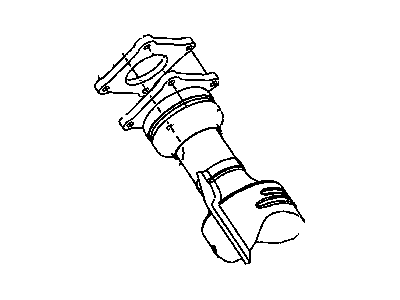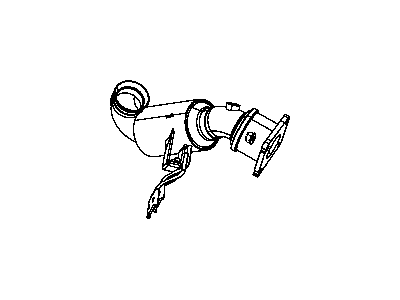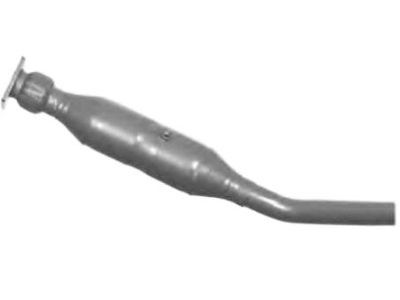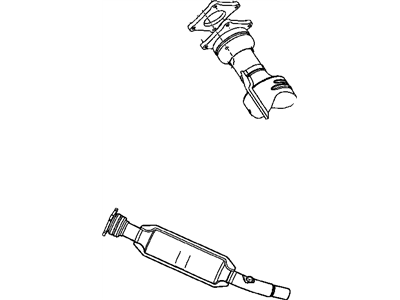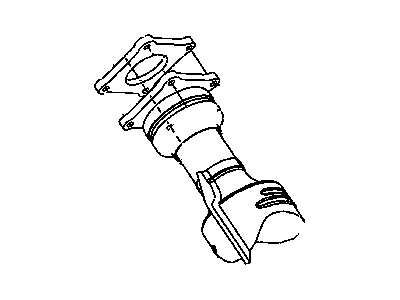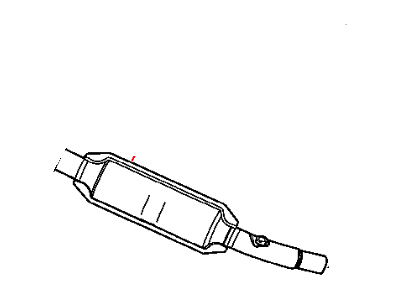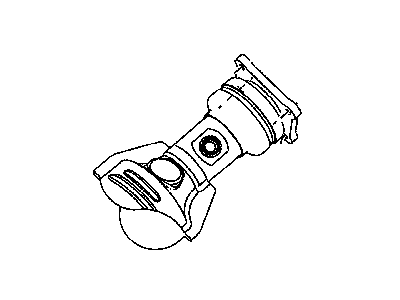
My Garage
My Account
Cart
Genuine Chrysler PT Cruiser Catalytic Converter
Cat. Converter- Select Vehicle by Model
- Select Vehicle by VIN
Select Vehicle by Model
orMake
Model
Year
Select Vehicle by VIN
For the most accurate results, select vehicle by your VIN (Vehicle Identification Number).
25 Catalytic Converters found
Chrysler PT Cruiser Catalytic Converter
Part Number: 5273981AA$636.90 MSRP: $925.00You Save: $288.10 (32%)Chrysler PT Cruiser Catalytic Converter
Part Number: 5273981AB$636.90 MSRP: $925.00You Save: $288.10 (32%)Chrysler PT Cruiser Catalytic Converter
Part Number: 5085661AB$818.93 MSRP: $1205.00You Save: $386.07 (33%)Chrysler PT Cruiser Catalytic Converter
Part Number: 5085905AC$3185.15 MSRP: $4695.00You Save: $1509.85 (33%)
Chrysler PT Cruiser Catalytic Converter
Part Number: 5085658AB$3083.45 MSRP: $4565.00You Save: $1481.55 (33%)
| Page 1 of 2 |Next >
1-20 of 25 Results
Chrysler PT Cruiser Catalytic Converter
This paper focuses on explaining the role of a catalytic converter as one of the main parts of the exhaust and emission systems of Chrysler PT Cruiser. The major purpose of this device is to eliminate toxic gases generated during combustion, for examples CO, HC, NOx, and convert them in to harmless products like water and CO2. The catalytic converter in use in Chrysler PT Cruiser is made of honeycomb substrate treated with various catalysts which include typically platinum, palladium and rhodium. Chrysler PT Cruiser has used a different style of the catalytic converter throughout the years with a direct-fit version and universal style. Direct fit converters can be installed without much difficulty, whereas universal converters need more adjustments to be made in order to be able to attach them to the vehicles. There are also performance catalytic converters which are made to have high flow so that it will further improve engine capabilities but would still need efficiency in terms of a catalyst. Altogether, it is evident that catalytic converter provides a major function of making sure that Chrysler PT Cruiser is compliant with emission requirements while being effective.
Looking for affordable and high-quality auto parts? Then you have already arrived at the proper online shop. We offer all Chrysler PT Cruiser Catalytic Converter at great affordable prices. Moreover, all genuine Chrysler PT Cruiser Catalytic Converter come with a manufacturer's warranty. In the long run, you would realize you have saved a lot of trouble and money with OEM parts from here.
Chrysler PT Cruiser Catalytic Converter Parts Questions & Experts Answers
- Q: Should you check with a dealer service department before replacing a catalytic converter at your own expense due to the federally mandated extended warranty on Chrysler PT Cruiser?A:Because of the Federally mandated extended warranty covering emissions-related components such as the catalytic converter, it is advisable to check with a dealer service department before replacing the converter at your own expense. The catalytic converter is an emission control device in the exhaust system that reduces pollutants from the exhaust gas stream. There are two types: the oxidation catalyst, which reduces hydrocarbon and carbon monoxide levels by adding oxygen, and the reduction catalyst, which lowers oxides of nitrogen by removing oxygen. These catalysts are combined into a three-way catalyst that addresses all three pollutants. Testing a catalytic converter can be costly, so if malfunction is suspected, it is best to take the vehicle to a dealer or authorized emissions inspection facility for diagnosis and repair. When servicing underbody components, inspect the converter for leaks, corrosion, dents, and other damage, including the welds and flange bolts. Although catalytic converters rarely break, they can become plugged; a vacuum gauge can help diagnose a blocked exhaust. To check for a restricted converter, connect a vacuum gauge to an intake manifold vacuum source, warm the engine, and record vacuum readings at idle and after quickly opening the throttle. If the reading after the fourth test is more than one in-Hg lower than the idle reading, the exhaust system may be restricted. For replacement, securely raise the vehicle on jackstands, remove the downstream Oxygen Sensor, and spray the nuts on the exhaust flange studs with penetrant before removal. Loosen the clamp behind the catalytic converter, detach the nuts connecting the catalyst to the exhaust manifold, and separate the converter from the exhaust system. Before installing the new converter, coat the threads of the exhaust manifold studs and the clamp bolt with anti-seize compound, ensuring all fasteners are tightened securely. Installation follows the reverse order of removal.
